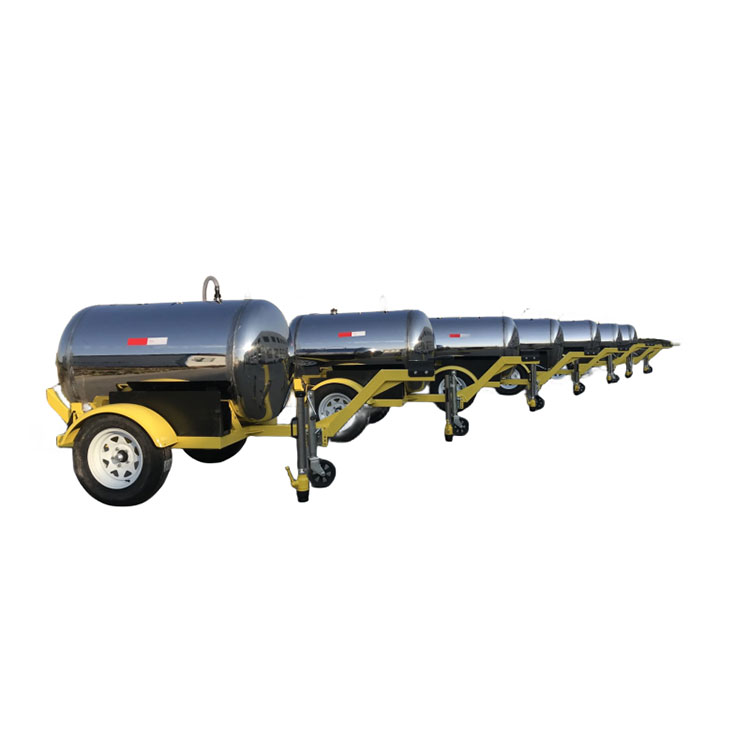Applications of Portable Foam Bladder Tanks
2024-07-17
Portable Foam Bladder Tanks are versatile and have several applications across different industries and scenarios. Here are some detailed applications:
1. Industrial Firefighting
- Oil and Gas Facilities: Used to manage fires involving flammable liquids and gases. The foam concentrate stored in bladder tanks helps in quickly extinguishing fires and preventing re-ignition.
- Chemical Plants: Essential in dealing with fires involving hazardous chemicals where traditional water-based methods might be ineffective or dangerous.
- Power Plants: Employed to control fires in power generation facilities, especially those involving oil-based transformers and other flammable materials.
2. Aviation
- Airport Firefighting: Deployed for emergency responses to aircraft fires on runways and in hangars. They ensure rapid and effective foam deployment to control fires involving aviation fuel.
- Helipads and Helidecks: Used in offshore and remote helipads where quick response to helicopter fuel fires is crucial.
3. Marine
- Ports and Harbors: Essential for combating fires on ships, boats, and at dockside facilities. Portable tanks allow for flexible positioning depending on the location of the fire.
- Offshore Platforms: Used on oil rigs and other offshore facilities to manage fires where immediate access to firefighting resources is limited.
4. Municipal and Rural Firefighting
- Fire Departments: Employed by local fire departments for urban and rural firefighting, providing additional foam resources when needed.
- Wildland Firefighting: Used in forest fire scenarios where access to water might be limited, and foam can provide a more effective means of controlling and extinguishing fires.
5. Military
- Military Bases: Utilized to handle fires involving munitions, fuel depots, and other flammable materials.
- Field Operations: Portable foam bladder tanks are critical in military field operations where quick deployment and flexibility are necessary.
6. Emergency Response and Disaster Relief
- Disaster Zones: Deployed in areas affected by disasters where fire risks are high, such as post-earthquake or post-hurricane environments.
- Temporary Installations: Used in temporary setups, such as field hospitals or refugee camps, to ensure fire safety.
7. Special Events and Large Gatherings
- Festivals and Public Events: Positioned at large events where the risk of fire is increased due to temporary structures, cooking equipment, and large crowds.
- Construction Projects: Used on construction sites where welding, cutting, and other activities pose fire risks.
8. Training and Drills
- Firefighting Training: Employed in training scenarios to provide realistic firefighting practice for firefighters, ensuring they are prepared for real-life situations.
- Safety Drills: Used during safety drills in various industries to simulate emergency response and foam application.
Benefits:
- Enhanced Safety: Provides a critical firefighting resource in environments where traditional water-based methods may be insufficient.
- Rapid Deployment: Can be quickly set up and moved to different locations as needed, ensuring timely response to fires.
- Versatility: Suitable for a wide range of fire scenarios, making them a valuable asset for various industries and applications.



